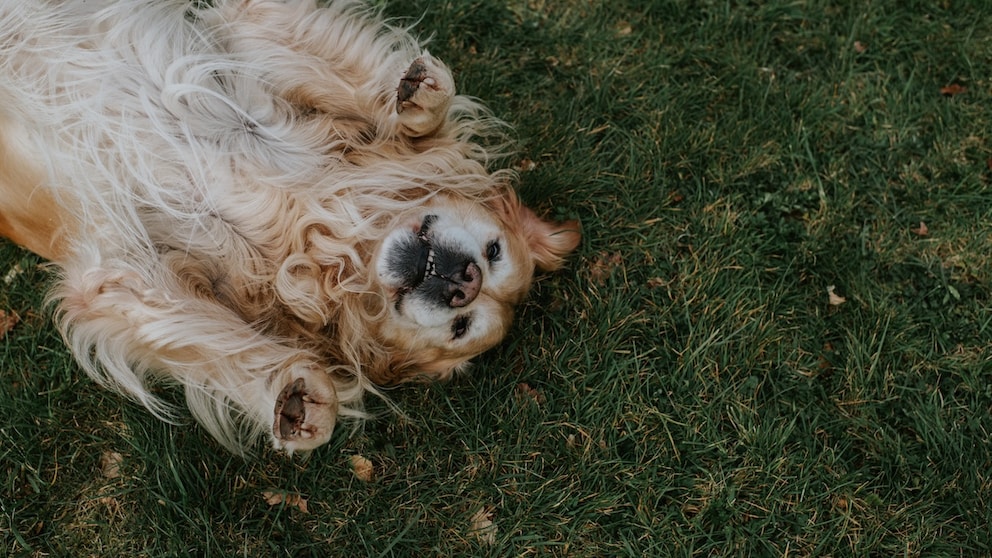April 25, 2025, 12:01 pm | Read time: 2 minutes
When a dog shows its belly, we humans are often tempted to give it a rub. But be careful! This can backfire. What we interpret as an invitation to pet usually has other reasons. Dog trainer Katharina Marioth explains why those reasons exist.
Interpreting the body language of our four-legged friends correctly is not always easy. But when a dog shows its belly, many are sure: It wants to be petted. However, this is a misconception, as dog trainer Katharina Marioth clarifies in an interview with PETBOOK.
When a Dog Shows Its Belly, It’s Not an Invitation, but Rather a Signal
“Just because a dog shows its belly doesn’t automatically mean it wants to be petted,” the dog trainer explains. In most cases, this behavior is a calming gesture or an expression of submission — not a sign of well-being.
If a dog suddenly becomes stiff or even starts to whine while being petted, these are clear warning signs. “The dog is showing a particularly vulnerable area — it’s not an invitation, but rather a signal: ‘Don’t hurt me,'” Marioth explains.
In fact, there are also dogs that show their belly to get petting — but they look much more relaxed. Marioth describes: “If the dog appears relaxed, doesn’t freeze, and shows no signs of stress, it can be an invitation.” Soft facial features, open mouth corners, and a gentle gaze are positive signs.
Petting sleeping dogs is also taboo. “The sleeping area is a retreat, our hands have no place there,” the trainer emphasizes. Even an exposed belly in this case is not a “free pass for petting.”

How to correctly interpret the body language of rabbits

8 reasons why cats arch their backs

Understanding Cats Better — Body Language and Behavior Explained
How to Tell if a Dog Wants to Be Petted
For guests, Marioth recommends paying attention to body language and facial expressions. Proximity, relaxed eye contact, and loosely hanging lips indicate a willingness to be petted. However, if the dog suddenly turns away, restraint is advised.
Marioth also warns of an “escalation ladder” in dog language: lip licking, avoiding eye contact, soft growling, or retreating are clear signals. “These signals don’t mean the dog doesn’t like you—it just doesn’t want closeness at that moment.”
The expert’s conclusion: Recognizing and respecting your dog’s signals builds trust — and strengthens the relationship.

